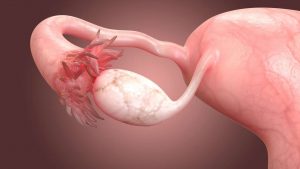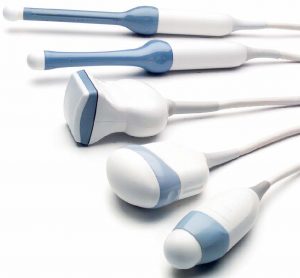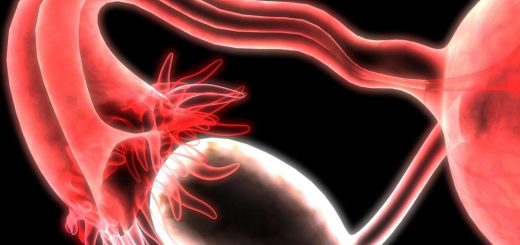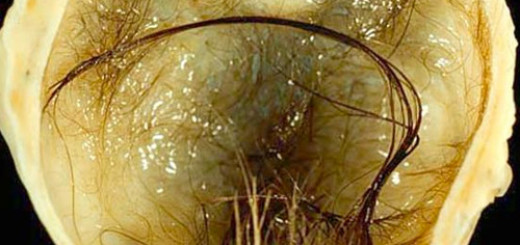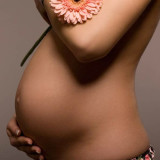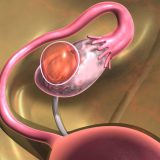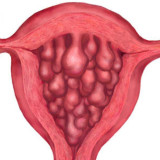A cyst is a benign tumor filled with fluid. The following functional cysts can be formed in the ovaries: endometrial, dermoid, follicular cysts and corpus luteum cysts. In addition, they are divided into congenital and acquired.
The body of ovarian cyst may consist of several chambers filled with serous fluid. Their size usually does not exceed 7-8 cm. The cyst wall has a small thickness. Their cells produce a liquid that fills the cavity. With the filling the cyst increases in size.
Follicular ovarian cyst
Follicular ovarian cyst appears when the follicle is not rupture, but only grows even more. The ovarian cyst usually grows on the inside of the ovary. It rarely grows out, and does not create a pathological growth on the internal organ. Follicular cyst can be in the form of a single-cavity structure or cluster.
If cysts appear on both ovaries and cover almost all of their area, the ovaries do not function properly, which in its turn affects a woman’s fertility.
Causes of follicular ovarian cysts
Follicular ovarian cyst is an example of a functional cyst, and its appearance is primarily associated with endocrine disorders. In addition, in the list of the reasons there are early age of the first menstrual cycle, stress, irregular cycles and high excess weight.
Follicular ovarian cyst symptoms
As in most cases with ovarian cysts, follicular cysts do not manifest themselves clinically. Most often they are found “accidentally” during a planned visit to the doctor during the ultrasound procedure.
However, an increased in size cystic formation puts pressure on neighboring internal organs and changes the ovariy, and that can have some ovarian cyst symptoms.
The typical for the ovarian cyst symptoms are the next:
- Pain in the abdomen or groin
- Pain in the ovary
- In case of closeness to the bladder, the women have dysuria, which is pain during urination and painful pressure on the bladder.
- Abdominal discomfort, bloating
- Torsion or cyst rupture causes peritoneal symptoms
Complications of follicular cyst
It happens that the presence of follicular cysts is accompanied by the development of complications.
Large amount of blood can accumulate in the cyst cavity as a result of tumor development. It means there is a high probability of the cyst rupture and severe bleeding. Bleeding causes the following symptoms, which are signs of hypovolemic shock: tachycardia, pale skin, excessive sweating, weakness, confusion. Significant blood loss may even be an indication for transfusion.
Also, among the complications of follicular cysts can be noted twisting leg. It is dangerous because in addition to severe pain can cause ovarian necrosis.
Very rarely, but ovarian abscess as a complication happens.
Follicular cyst diagnosis
As it has been mentioned, the diagnosis of follicular ovarian cyst in most cases is accidental. The tumor is detected during preventive examination or ultrasound examination required for another reason. During this examination, the doctor evaluates the size of the cyst and its contents.
Ultrasound is not only an excellent diagnostic tool, but is often used to evaluate the effectiveness of the ovarian cyst treatment.
Follicular cyst treatment
Follicular cysts treatment differs not so much from treatment of other functional ovarian cysts types.
Since the main reason of their appearance is in hormonal disorders, the ovarian cyst treatment is usually taking medications that equalize the hormonal background. Such drugs not only reduce the detected cystic formations, but also effectively prevent the appearance of new ones.
However, even this is not always required. Many of the found on medical ultrasound formations are temporary and appeared in the course of natural reproductive system processes. In addition, follicular cyst, as a type of functional cysts, often does not require special ovarian cyst treatment and passes itself through 2-3 cycles. In this case, you only need a doctor’s monitoring and regular examination to watch changes and prevent the cyst growth.
If, however, the dynamics of cyst growth has been noticed or the cyst has already been found in large sized, surgery is necessary, during which the cyst is removed. Also, surgical removal is used if hormonal ovarian cyst treatment has not given the results. Most often, the follicular cyst is removed by laparoscopy. Unfortunately, in some cases, during the operation it is necessary to remove the ovarian tissue too, but it is rather exceptional cases.
Unfortunately, cystic formations are sometimes detected too late. This is because the follicular cyst has no pronounced symptoms at the beginning of the disease, and the pain that appears later can be interpreted as premenstrual pain. Therefore, the only way to protect yourself from the troubles associated with follicular ovarian cyst is regular visit to the doctor and medical ultrasound.
